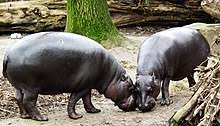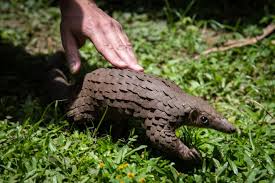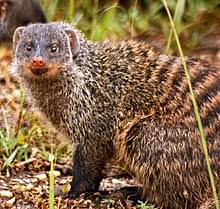The first step when identifying an unfamiliar mammal is determining its name. For most mammals, identification down to the species level is usually possible, although closely related species may sometimes only be recognized at the genus level.
This is achieved through the use of keys, consisting of a series of paired alternatives, one of which accurately describes the mammal in question.
The identification methods and descriptions of species adhere to a standard format. Examples are presented within this article and subsequent ones.
Measurements and descriptions are critical for identification. Common names can vary widely; sometimes, a single species has multiple common names, or a common name is applied to several species. This inconsistency is why scientific names are emphasized.
Mammals in General
Mammals are some of the largest terrestrial animals. They have hair on their bodies, which in most species forms a thick coat. However, in some, the hair only grows in specific parts of the body.
Mammals maintain a constant body temperature and give birth to live young. These offspring are nourished with milk early in life. A young mammal is weaned when it can feed itself and no longer depends on its mother’s milk. The gestation period refers to the time from fertilization until birth.
Read Also: 16 Medicinal Health Benefits Of Scleromitrion diffusum (Spreading Diamond Flower)
Measurements for Mammals

Body measurements play a vital role in mammal identification. To ensure consistency, there are standardized measurements for mammals, which are outlined in Table 5.1 below.
| Abbreviation | Measurement | Details |
|---|---|---|
| HB | Head and body | From the tip of the nose to the base of the tail |
| T | Tail | From the base to the tip of the tail, excluding terminal hairs |
| HF | Hindfoot | From heel to the tip of the longest toe, excluding nail or claw |
| E | Ear | From notch to tip, excluding terminal hairs |
| TLS | Total length of skull | From the anterior part of the skull to the most posterior part |
| CI | Condylo-incisive | From the front of the incisor teeth to the condyles at the back of the skull; applicable to shrews only |
| FA | Forearm | Total length of the radius bone or forearm; applies to bats only |
| SH | Shoulder height | From ground level to the highest point of the shoulder; applicable to large mammals like elephants |
| TL | Total length | From the tip of the nose to the end of the tail; used when distinguishing HB from T is difficult |
| HL | Horn length | From the base to the tip of the horn along the front edge; applies to bovidae only |
| WT | Weight | Total weight of the animal |
| Nd | No data | No information on this measurement |
(Source: Happold, 1987)
Read Also: 12 Medicinal Health Benefits Of Renealmia alpinia (Pink cone ginger)
Mammalian Orders in Nigeria

Nigeria is home to thirteen mammalian orders. These include Tubulidentata, Carnivora, Rodentia, Chiroptera, Insectivora, Lagomorpha, Perissodactyla, Artiodactyla, Pholidota, Sirenia, Primates, Hyracoidea, and Proboscidea. A key to identifying these orders is provided below:
Scientific Names of Nigerian Mammals
Below is a table listing the scientific names of some Nigerian mammals.
| Order | Family | Common Name | Scientific Name |
|---|---|---|---|
| Insectivora | Tenrecidae | Giant otter-shrew | Potamogale velox |
| Erinaceidae | Fair-toed hedgehog | Erinaceus albiventris | |
| Soricidae | African giant shrew | Crocidura flavescens | |
| Chiroptera | Pteropodidae | Straw-coloured fruit bat | Eidolon helvum |
| Nyecteridae | Bate’s slit-faced bat | Nycteris arge | |
| Primates | Lorisidae | Angwantibo | Arctocebus calabarensis |
| Cercopithecidae | Anubis baboon | Papio anubis | |
| Pholidota | Manidae | Tree pangolin | Manis tricuspis |
| Rodentia | Muridae | Black rat | Rattus rattus |
| Carnivora | Canidae | Side-striped jackal | Canis adustus |
| Tubulidentata | Orycteropodidae | Aardvark | Orycteropus afer |
| Proboscidea | Elephantidae | African elephant | Loxodonta africana |
| Hyracoidea | Procaviidae | Western tree hyrax | Dendrohyrax dorsalis |
| Artiodactyla | Suidae | Warthog | Phacochoerus aethiopicus |
(Source: Happold, 1987 and Ayodele et al., 1999)
Do you have any questions, suggestions, or contributions? If so, please feel free to use the comment box below to share your thoughts. We also encourage you to kindly share this information with others who might benefit from it. Since we can’t reach everyone at once, we truly appreciate your help in spreading the word. Thank you so much for your support and for sharing!
Read Also: Complete Composting Guide for Beginners

